Clever McLaren F1 2026 development trick uncovered as Mercedes starve W16

The F1 2025 summer break provides us with an opportunity to look back at the development battle that’s been raging on in the first half of the season.
Using the car presentation documents issued at each race we’re able to track what’s changed on a race-to-race basis, albeit with the caveat that what’s listed at a race might not actually be raced and saved for a later race instead.
How the F1 2025 development race has evolvedOne of the interesting asides to note whilst looking through the following charts is how development was affected this season by the introduction of more stringent load and deflection tests at the Spanish Grand Prix (Round 9).
Where teams used their resources ahead of and after that change provides some context on the implications posed, most of which revolves around the changes required to the floor, in order to regain performance that might otherwise have been lost.
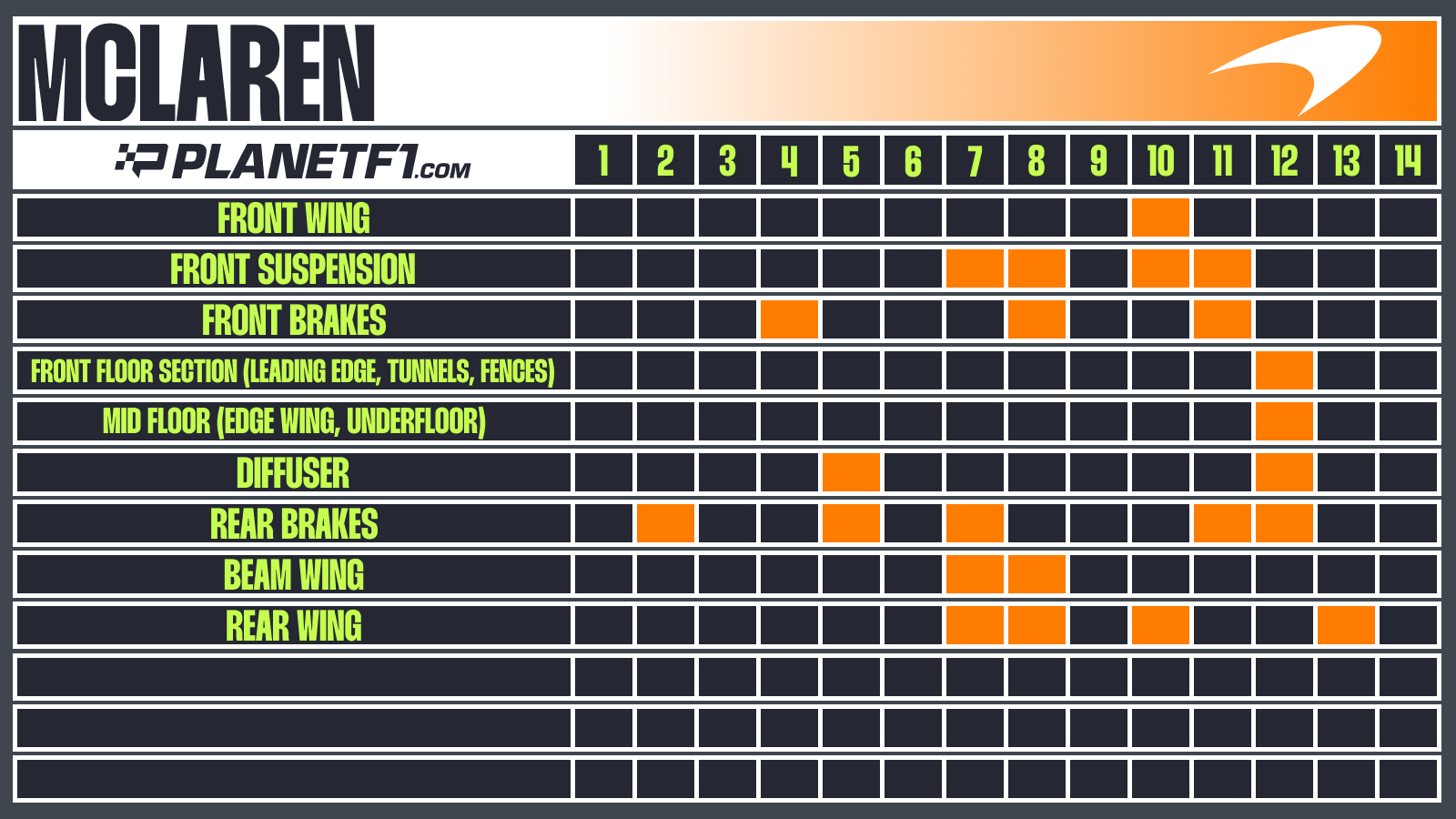
McLaren’s development programme saw it make its first major moves at Imola, having concentrated much of its effort ahead of that on the design of its front and rear brake duct arrangements.
However, the biggest update package didn’t arrive until round 12 at the British Grand Prix.
The team has also continued to follow a trend it set earlier in this regulatory cycle, whereby it will introduce a new component, test and evaluate it at that venue but not race it until it has confirmation it’s performing as anticipated.
👉 The new evidence that shows McLaren’s brake cooling philosophy
👉 McLaren go big with Monaco upgrades as title favourites prepare for the future
👉 How McLaren sharpened the MCL39 into a versatile, all-circuit contender
👉 McLaren hint at hidden MCL39 updates in further British GP boost
👉 Uncovered: McLaren’s subtle change that yielded big performance gains

Ferrari introduced a new floor at the Bahrain Grand Prix, with its subsequent development focused on trimming the car at each venue with new beam and rear wing solutions the main focus.
Another floor redesign arrived at the Austrian Grand Prix ahead of the highly anticipated rear suspension package that was introduced at the Belgian Grand Prix.
👉 Ferrari SF-25 upgrades explained with significant new floor on the list in Bahrain
👉 Analysis: Hamilton and Leclerc boost as Ferrari continue upgrade push at Saudi Arabian GP
👉 Ferrari make big changes to SF-25 front wing after new FIA tests
👉 New raft of Ferrari updates uncovered as designers intervene on SF-25
👉 Ferrari unveil highly anticipated ride-height solution at Spa
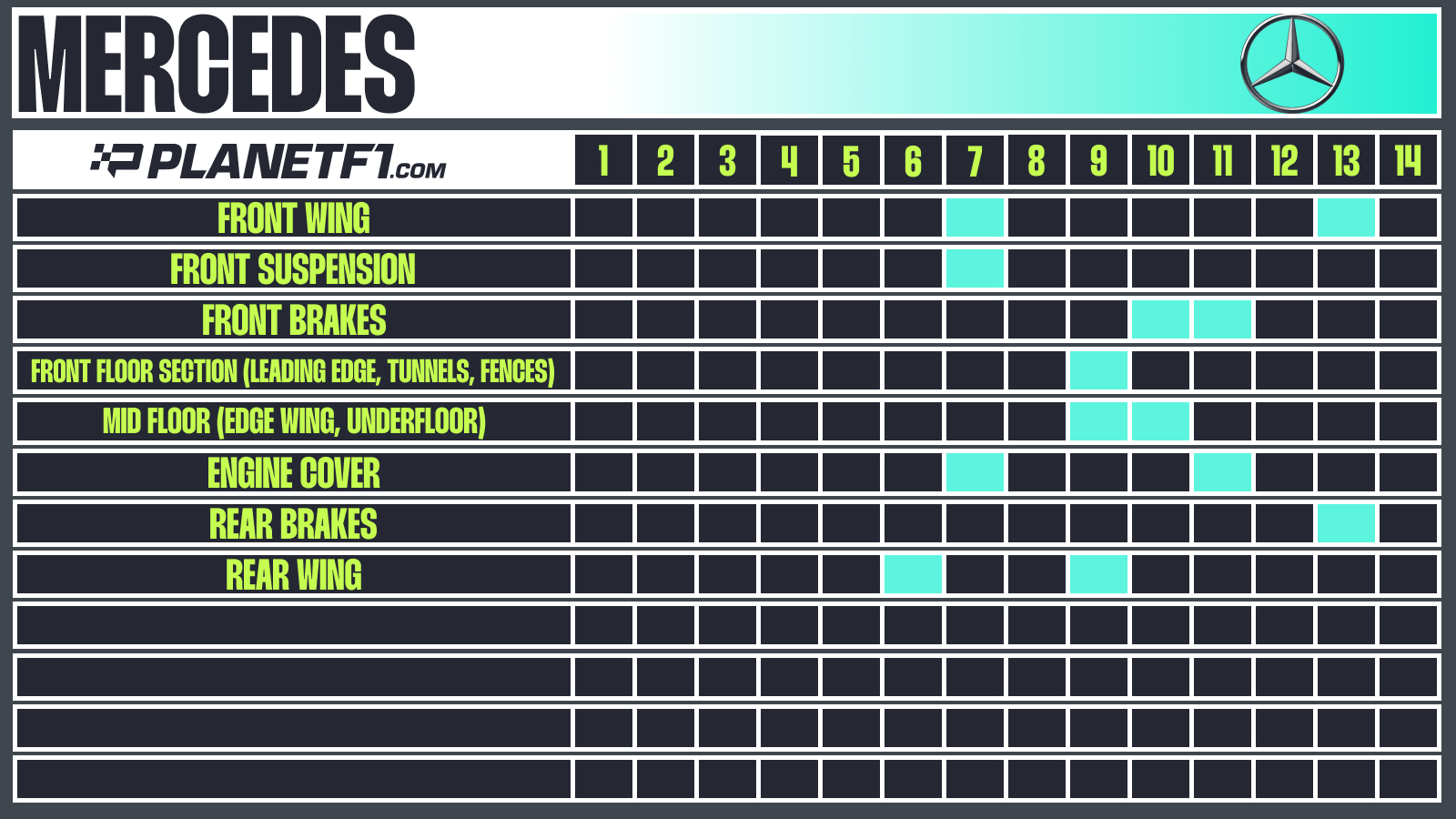
Mercedes starved the W16 of development in the early phase of 2025, with the first update being made available at Miam as the team made some adaptations to its rear wing assembly.
Mercedes followed this up swiftly with changes to the front wing, front suspension and engine cover at Imola, before making some of their more substantial changes at and after the Spanish Grand Prix in order to overcome any issue posed by the more stringent front wing load and deflection tests that are now in force.
👉 Uncovered: The W16 rear wing solution that contributed to Antonelli’s Sprint pole
👉 Small upgrades, big gains? Mercedes introduce a handful of new components at Imola
👉 Mercedes focus their efforts elsewhere, as there’s no new front wing on the menu
👉 The new and old parts that Mercedes used in Canada to help propel Russell to pole
👉 Mercedes look to cool off in Austria as W16 upgrades under the microscope
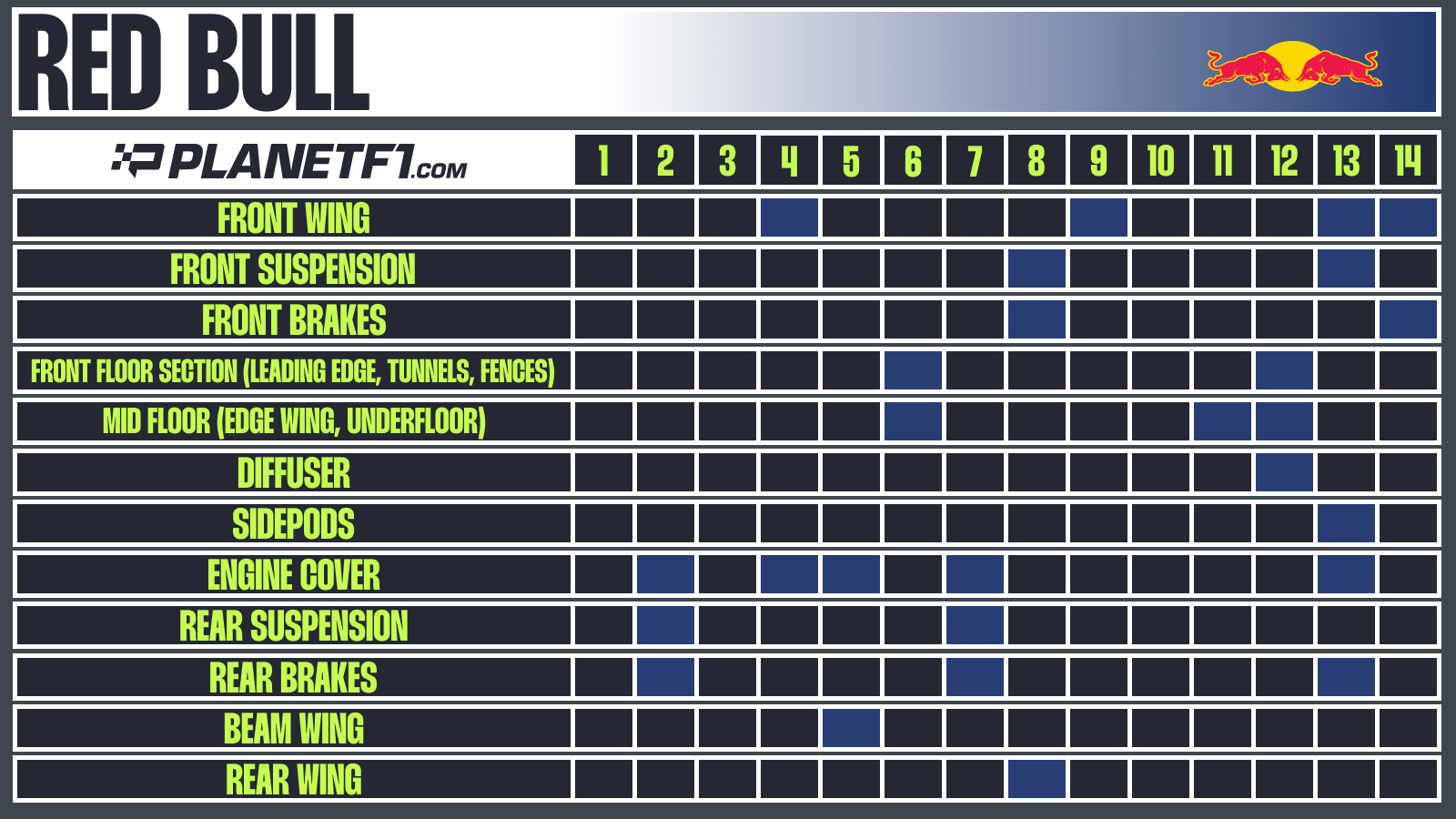
Red Bull were relatively productive right out of the gate, with a wide spread of development around the RB21, as the team knew it had ground to make up on its rivals ahead.
This has continued throughout the first half of the season too as the team has looked to find the right operating window for what has often been a tricky car to balance.
👉 Revealed: The tiny Red Bull changes that made a huge difference in Japan
👉 Uncovered: The subtle changes introduced by Red Bull to combat the RB21’s wayward traits
👉 Red Bull play the imitation game with RB21 upgrade for Austrian GP
👉 Tech analysis: Red Bull throw kitchen sink at RB21 in bid to catch McLaren
👉 Revealed: The new parts added to Red Bull’s attacking arsenal
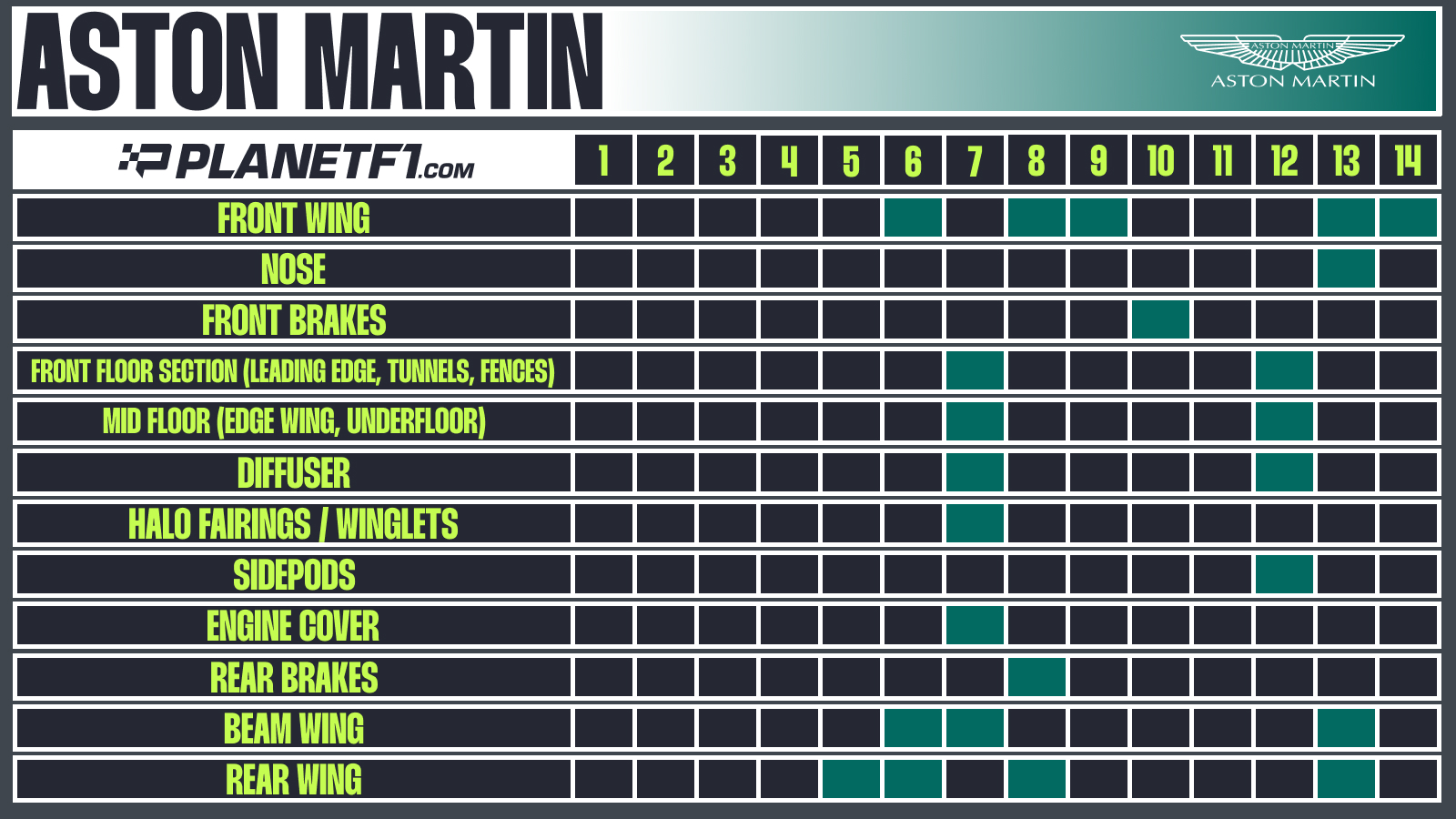
Aston Martin’s development began in Miami as it installed a new rear wing on the AMR25 but it was at Imola where we really started to see the theam show its teeth.
An entirely new floor, revised halo fairing and winglets, engine cover and beam wing were all available from there onwards.
A similarly large cache of parts also arrived at the British Grand Prix, with some quite significant changes made to the sidepods as part of the overhaul.
👉 Aston Martin back in the game as they make serious changes to the AMR25
👉 Aston Martin catch the eye as midfield development race hots up
👉 Fresh details emerge of Aston Martin, Alpine and Racing Bulls’ subtle changes in Canada
👉 Uncovered: Aston Martin’s make-or-break upgrade ahead of crucial F1 2026 decision
👉 Uncovered: The secrets behind Aston Martin’s performance boost
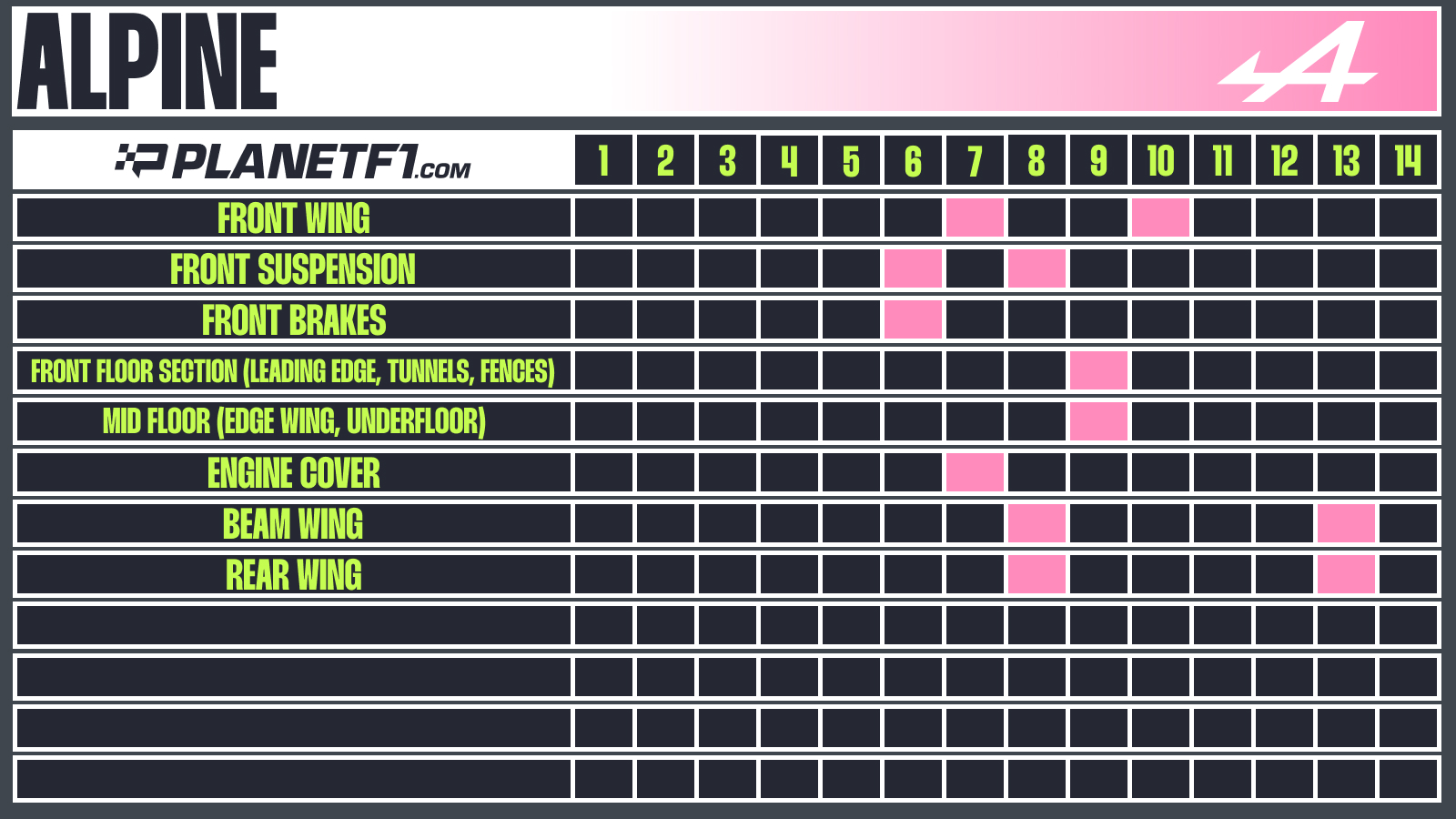
Alpine has been one of the least productive teams on the grid this season, with its first updates arriving in Miami and a sporadic array of new parts arriving in the time since then.
Alpine’s focus undoubtedly lies in recovering its position in 2026 rather than expending resources on this year’s campaign, which given the way the resource restrictions work, also places it in a key position, as it will continue to have access to the most CFD and wind tunnel time heading into next year’s campaign given its championship position.
👉 First look: The Alpine front wing hint that suggests a change of course
👉 Alpine make adjustments for Monaco
👉 Fresh details emerge of Aston Martin, Alpine and Racing Bulls’ subtle changes in Canada
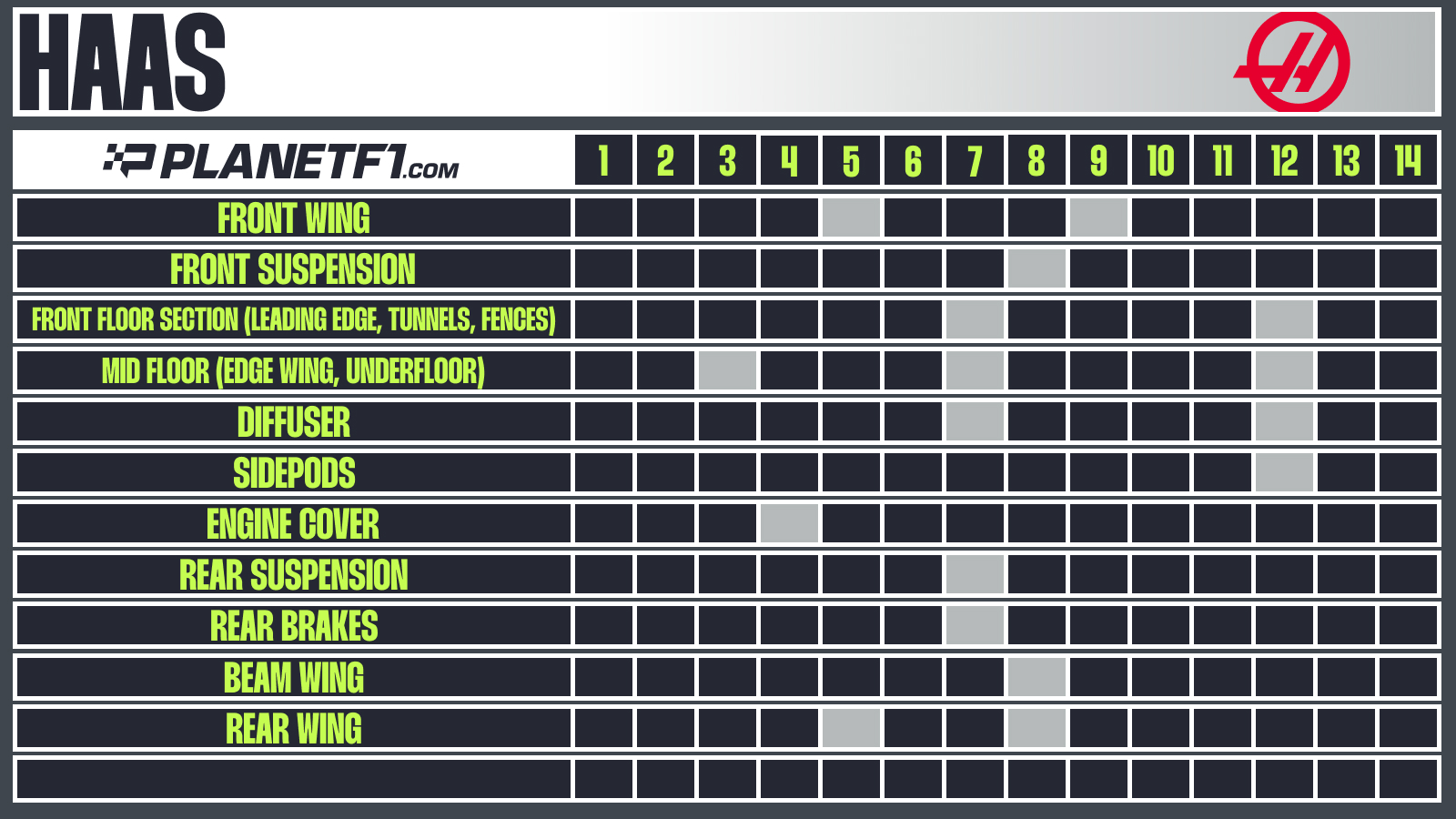
Haas did some light surgery on the VF-25 in the opening phase of 2025, with the first change made to the floor in Japan, before making their first big change in Imola, with an entirely new floor and changes made to their rear suspension fairings and rear brake duct.
Another big step was made at the British Grand Prix too, as Haas not only revised the floor once more but also made a sizeable change to the sidepod layout too.
👉 Bare bones images captured of the Haas VF-25 in Japan
👉 Biting back? Haas sets clear target as eye-catching British Grand Prix upgrades arrive
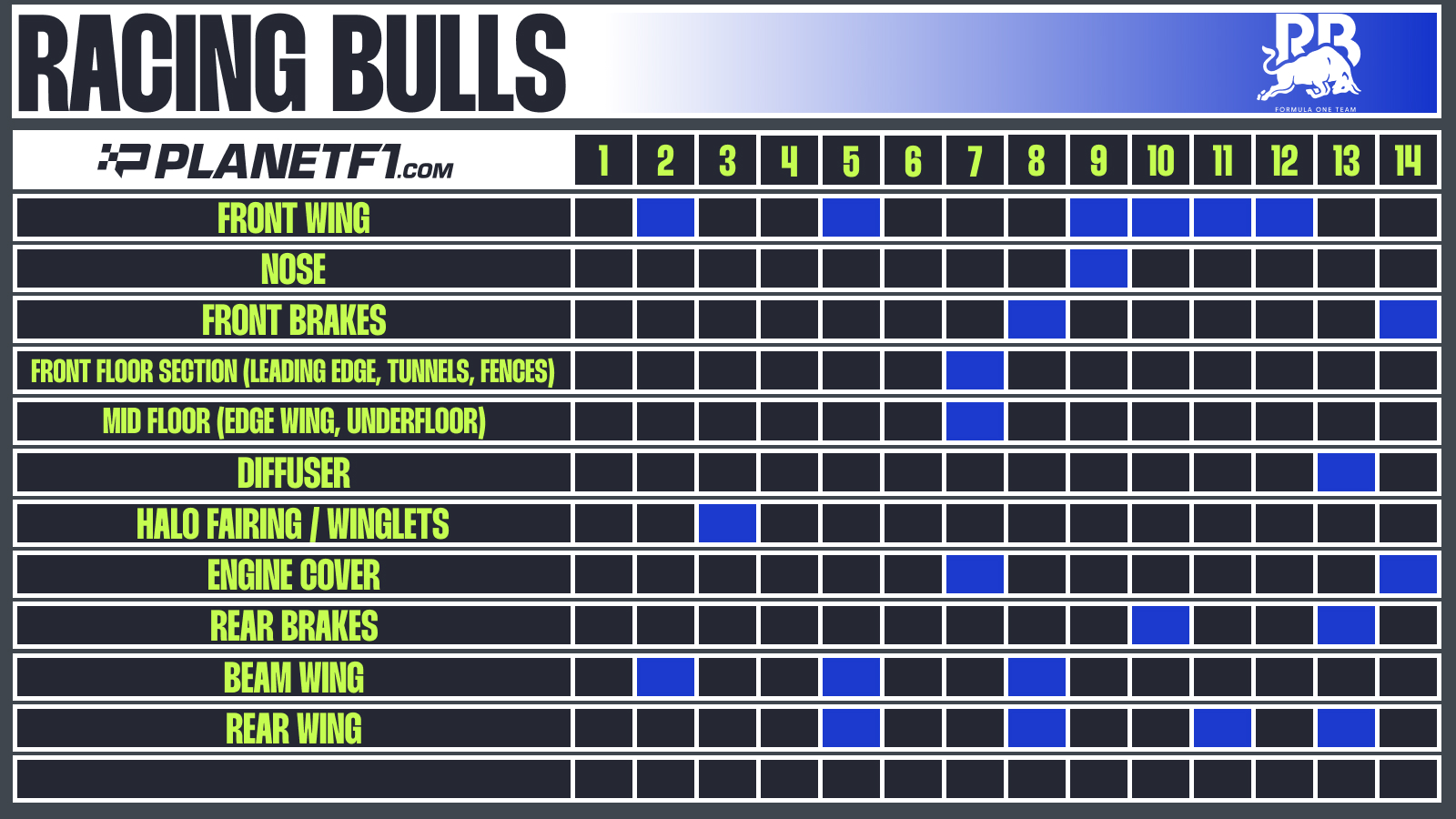
Racing Bulls has been pretty prolific when it comes to development of the VCARB02 this season, albeit most of what we’ve seen from the junior team has revolved around tuning the main package for the specific needs of the venues being visited.
This has resulted in the introduction of multiple front, beam and rear wing specifications as the team has not only adapted to the change in load and deflection tests from Spain onwards, but also keyed the car to the demands of the circuits in question.
That’s not to say Racing Bulls has not been chasing performance either though, with the floor also given some attention in the middle of that run, whilst there’s been suitable changes made for cooling too.
👉 Low [v]carb diet: The updates Racing Bulls have introduced to undercut their rivals
👉 F1 tech analysis: Racing Bulls inspired by Mercedes’ design choices?..
👉 Fresh details emerge of Aston Martin, Alpine and Racing Bulls’ subtle changes in Canada
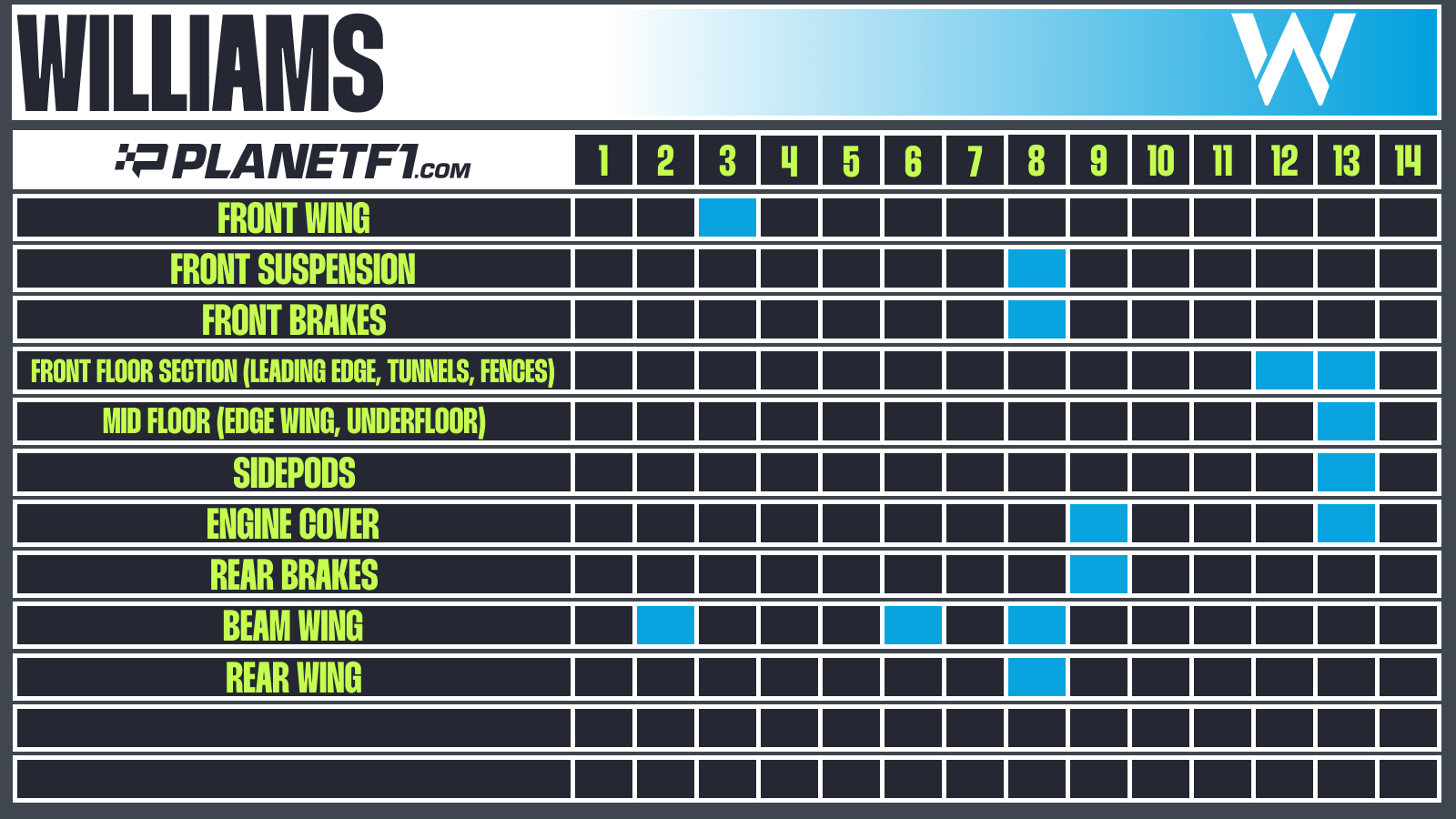
Williams had already been clear at the start of the season that any development that was to be introduced on this year’s car had already been in the pipeline for some time and would be more about making the car work more effectively at different venues.
What we’d seen up until the Belgian Grand Prix supported this too, with downforce and cooling levels the team’s main focus.
However, at the Belgian Grand Prix Williams did break away from this tradition, with a more performance orientated update package being installed that featured a new floor and revised sidepod and engine cover bodywork.
👉 Unveiled: How the F1 development race evolved at the Chinese Grand Prix
👉 Ferrari and Williams take a dip into last year’s parts bin for the Monaco GP
👉 How Williams are looking to stay one step ahead with new FW47 updates
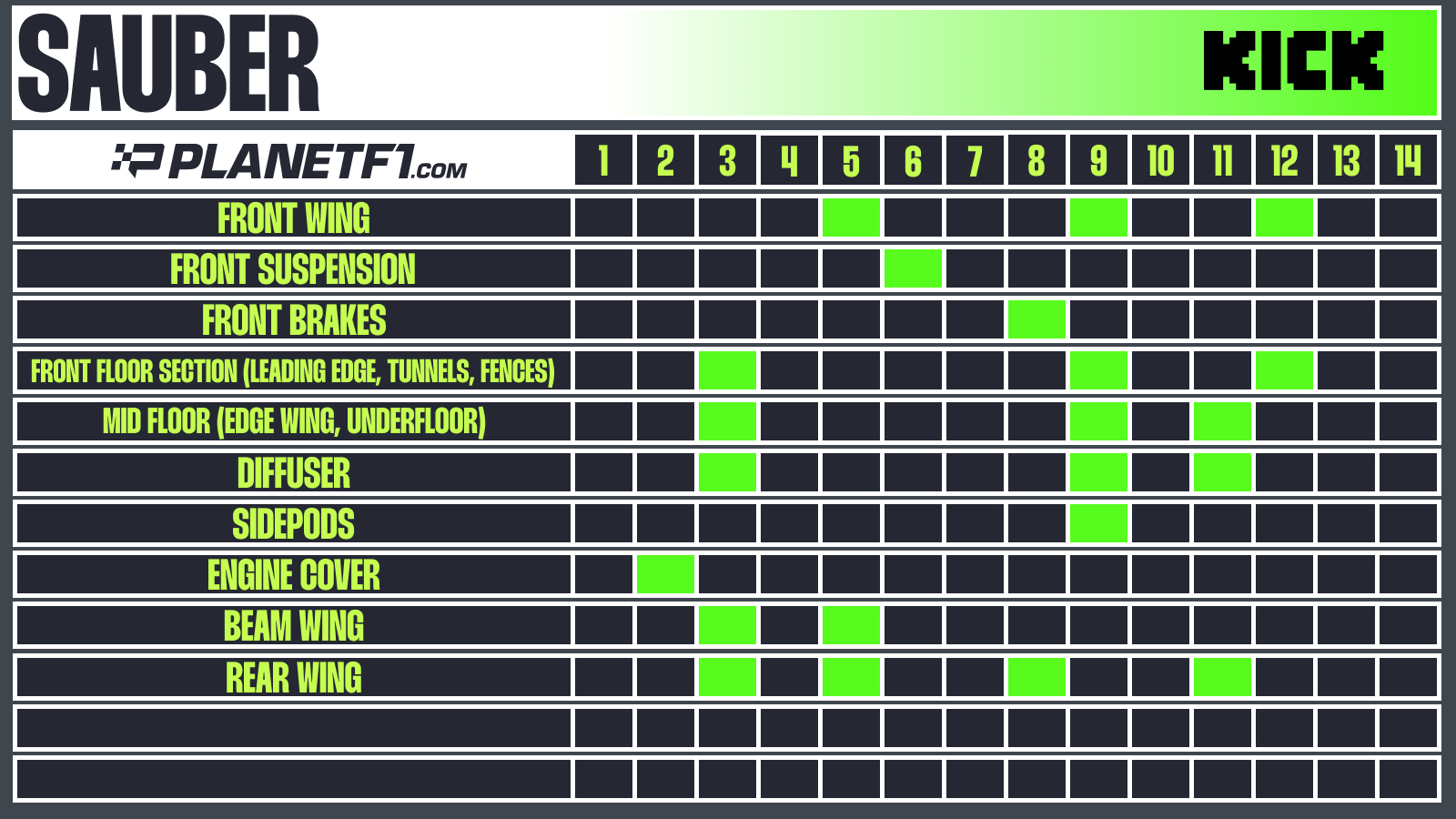
Sauber have been one of the more productive teams this season, with several largescale update packages being installed ahead, at and after the Spanish Grand Prix, as they look to improve their championship standing.
This has been helped, in part, by its lowly finishing position in 2024, which granted Sauber the most CFD and wind tunnel time on the grid, allowing it to retain more interest in this year’s development race whilst also allowing the team to focus on next year’s car in parallel.
👉 Unveiled: How the F1 development race evolved at the Chinese Grand Prix
👉 Sauber’s adjustments for Monaco
👉 Five genius technical solutions we’ve seen so far in F1 2025
planetf1.com





